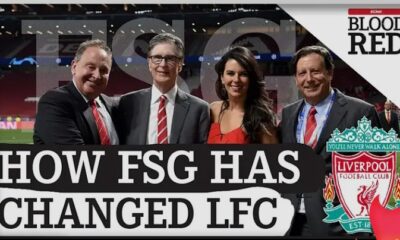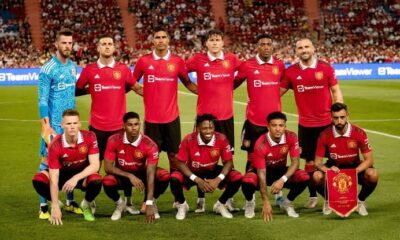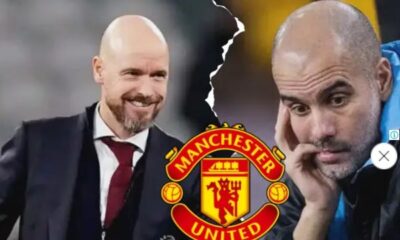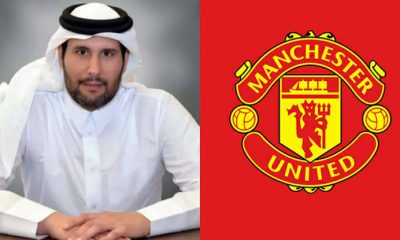Liverpool
Manchester United’s new owners will have a problem that FSG spent £195m on Liverpool to fix it

Manchester United’s new owners will have a problem that FSG spent £195m on Liverpool to fix it

Manchester United could have new owners by next season, with Old Trafford set to be key to the future
It remains unclear who will take Manchester United forward in the coming years.
As British billionaire Sir Jim Ratcliffe and Qatar Islamic Bank chief Sheikh Jassim bin Hamad al-Thani battle for control in a bidding war to separate United from the deeply unpopular Glazer family, future successes of the club will largely depend on what is possible. do with Old Trafford.
Although Old Trafford remains one of the most iconic stadiums in English football, the look and feel somewhat reflects the competitive side of the club over the past decade which has fallen into decline and required investment to regain its former glory.
Since the Glazers took control of United through a leveraged buyout in 2005 and burdened the club with huge debts that have only piled up, the Glazers have been at the center of the wrath of the fans of the club, which has reached boiling point lately. times seethes following the European Super League conspiracy in which Liverpool were instrumental.
Protests over American family ownership of the club are a constant and the Glazers finally put the club up for sale last year and potential owners offered up to £5.5billion for the club, which the Glazers are worth £6billion. , it looks like their reign is about to end. Glazer’s approach to Manchester United allowed others to close the financial gap with the Red Devils, resulting in a shift in the club’s competitive balance from Old Trafford.
Liverpool took advantage of the lack of action in the redevelopment of the stadium.
When Fenway Sports Group took over Liverpool in October 2010, one of the first items on the to-do list was whether the club’s future lay at Anfield or whether a new project in the city would be the best way forward. , the potential source of revenue to maximize the club.
As in Boston some eight years earlier, the FSG made the decision, as they had done at the Red Sox’s home stadium of Fenway Park, to uphold the tradition and redesign the stadium that was the club’s home.
Join the conversation
Add it to the comments below to share your thoughts
The start of next season will see the completion of the Anfield Road End redevelopment, an £80million development project which will increase Anfield’s capacity from 7,000 seats to 61,000, an increase of 15,000 seats since development of the main stand was completed seven years ago. When FSG took over the club 13 years ago, match revenue amounted to £40.9 million at the end of the 2010/11 financial year. Fast forward to the most recent accounts, for the year ending May 2022, and the club has raised £86.8m. Match revenues have more than doubled in the past 10 years with capacity increasing by approximately 18%.
In 2016 the £114m redevelopment of the main stand was completed, increasing the capacity by 8,500 seats and a new matchday experience and significantly improved commercial offering helped Liverpool’s revenues grow significantly.
In Liverpool’s published 2015/16 financial accounts, revenue for the matchday was £62.4m. The following accounting period, 2016/17, reported revenues of £73.5m, up nearly 18% year on year. Matchdays revenue increase since completion of Main Grandstand is 39%.
In the Premier League at the moment, only Manchester United (£110.5m) and Tottenham Hotspur (£106.1m) have managed to cross the £100m mark in daily revenue. But Liverpool, after Anfield Road End extension is finished, are likely to join that club by 2025
The Reds still lag Manchester United in terms of matchday revenue, but the gap has narrowed significantly over the last decade. The 105% increase in Liverpool’s match revenues, from £42.3m in 2012 to £86.8m in 2022, demonstrated how the redevelopment has accelerated revenue growth and enabled the Reds to close the gap financial gap. United’s matchday earnings have increased by just 12% over the same period, from £98.7m in 2012 to £110.5m in 2022.
Tottenham Hotspur’s decision to move to a new stadium, a £1bn building where they were based in 2019, saw them increase matchday revenue from £27.6m to £106.1m. pounds, an incredible increase of 284% over the past decade.
However, with an increasing chance of a change of ownership at Manchester United, the remodeling of Old Trafford or the potential construction of a new stadium for whoever takes the helm will be among the most pressing tasks ahead as the With With that in hand, the club has the potential to create a state-of-the-art stadium, giving them the opportunity to maximize revenue potential both on matchdays and beyond.
For Spurs there was huge value in their new stadium and working with the NFL to bring America’s favorite national sport to British shores under a multi-year deal, and that’s something United could explore.
What is likely to happen is a complementary development which has seen Manchester City boost revenue through the creation of the Etihad Campus experience for fans, where greater fan engagement has brought greater opportunities to earn money. ‘money. If Manchester United were able to realize the potential of a revamped Old Trafford or aim for something bolder with the construction of a brand new stadium, their ability to close the gap that clubs like Liverpool have been able to achieve could be challenged by United. increase in income. This would allow them to flex even more muscle in the transfer market under UEFA’s new Financial Fair Play rules.

 Manchester United11 months ago
Manchester United11 months agoMason Greenwood Has Confirmed His Departure From England For The white Country’s National Team

 Manchester United1 year ago
Manchester United1 year ago‘I pleaded with Him to join Arsenal but He chose Man united over us’: William Saliba confirmed His £45m international teammate have agreed personal terms to join Man united over Arsenal

 Manchester United1 year ago
Manchester United1 year ago‘He is making the biggest mistake in his career’: Kelvin De Bruyne CONFIRMED his £50m international teammate have agreed personal terms to join Man united ahead of Man City

 Uncategorized11 months ago
Uncategorized11 months agoMan United news LIVE: Glazer takeover price’met,’ Sheikh Jassim reacts, Jadon Sancho swap agreement

 Manchester United1 year ago
Manchester United1 year agoMan city boss Pep Guardiola is UNHAPPY as €65m European star tells him nobody can stop him from joining Erik Ten Hag’s Man united this season.

 Manchester United1 year ago
Manchester United1 year agoCelebration at Old Trafford Qatar’s Sheikh Jassim arrives at Man United to sign the takeover deal (deal 100% done by Fabrizio Romano) unverified.

 Manchester United1 year ago
Manchester United1 year agoMonday morning done deal: Man united completed the signing of £50m superstar as potential replacement for Erikson,all paperwork work signed last night,player set to undergo his medical at London Carrington today

 Manchester United11 months ago
Manchester United11 months agoMan United takeover ‘will happen,’ says Sheikh Jassim, who is willing to pay another £2 billion to complete the deal.

























